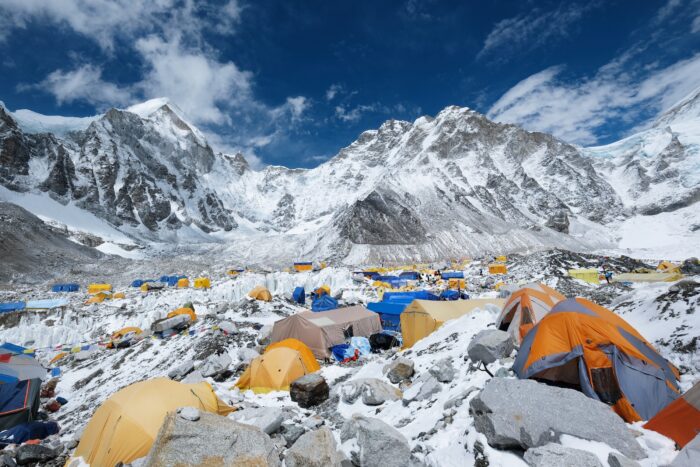The Kathmandu Post revealed today that after a successful test in April, a memorandum of understanding (MoU) was signed between the three authorities responsible for managing garbage on Everest. Drones will remove trash from the higher slopes of the world’s tallest mountain. This agreement applies to the Khumbu region, not just Mount Everest.
After successful testing in April, DJI long-distance heavy-lifting drones will start removing trash from neighboring Ama Dablam this fall, and then the efforts will continue on Everest during the spring 2025 climbing season, the local news service reported.
Reduction of Risk in the Khumbu Icefall

Until this agreement, local Sherpa guides carried trash from the upper slopes of Everest down to the base camp. Climbers and Sherpas on the normal route (from the south Nepalese side) must navigate the Khumbu Icefall, a constantly shifting river of ice just above basecamp that is notoriously dangerous.
The approximately 1km-long maze of ice blocks and hanging seracs is so threatening that the most experienced Sherpas and guides refuse to cross it during the day for fear that the sun’s heat will cause ice movement. Ascents through the icefall are usually done in the early morning when it’s the most stable.
The Sherpas tasked with trash removal may cross the Khumbu Icefall 30 times in a season to bring down oxygen bottles, gas canisters, food, ropes, and other debris climbing teams leave behind on quests to top Mount Everest.
On April 18, 2014, a falling serac triggered an avalanche that killed 16 Sherpa guides in the icefall, canceling the entire climbing season. According to the Himalayan Database, 50 people perished in the Khumbu Icefall between 1953 and 2023.
Famed mountaineer and alpinist Conrad Anker stated, “The Khumbu is probably the most dangerous single place in the climbing world. You can just sit at base camp during the day and watch avalanches roar down right over the climbing route. It scares everyone.”
Jagat Bhusal, chief administration officer of the rural municipality that hosts Everest, stated in the Kathmandu Post, “Using drones will help us avoid the dangers in the Khumbu Icefall.”
Drones Increase Efficiency

The DJI Drone
- Max payload: 66 pounds
- Max flight distance without payload: 17 miles
- Max flight distance with full payload: 9.9 miles
- Max flight altitude: 19,685 feet
- Max video transmission distance: 12 miles
- Operating temperature range: -4 to 113 degrees Fahrenheit
- IP55 weather-resistant










